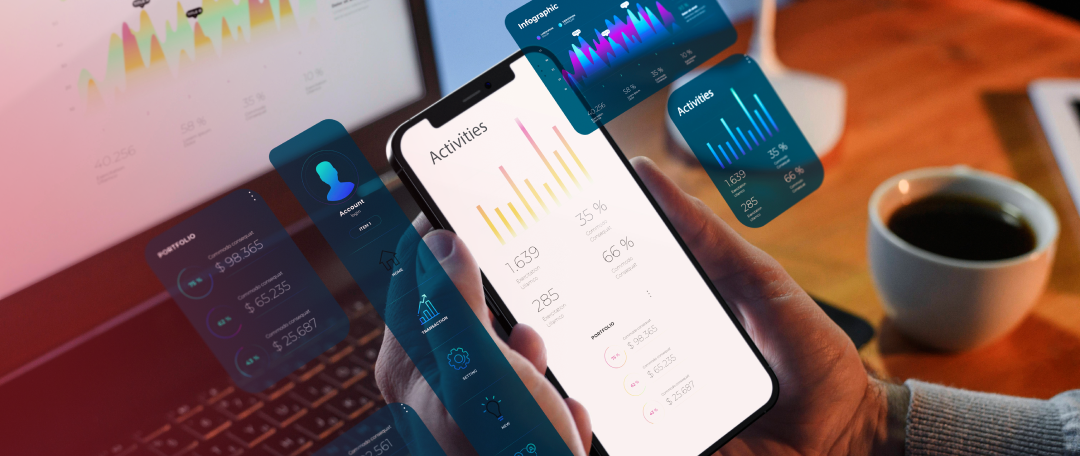Consider this, a customer logs into their banking app and finds themselves greeted by a personalized dashboard, instead of a generic homepage. This dashboard displays custom-made product recommendations based on their financial behavior, preferences, and goals. By analyzing the customer’s data in real time, the bank’s algorithms curate a unique experience for the individual. This example illustrates the incorporation of personalized banking into our everyday lives.
What is the importance of customization and personalization in banking in today’s evolving era? Let’s explore.
What is personalized banking and how does it enhance the customer experience?
Using the power of data analytics and digital technology, personalized banking transforms traditional banking services to curate tailored customer experiences.
Technologies that enable banking personalization include:
- Artificial Intelligence (AI)
- Big data
- Virtual agents or chatbots
- Automated services such as Robotic Process Automation (RPA) in testing
- Software development.

For example, banks can actively monitor transaction histories and behavioral patterns to offer targeted financial products. Customers receive customized loan options, investment advice, and savings strategies aligning with their financial goals and risk profiles. This proactive approach allows banks to deliver services that customers find genuinely useful, greatly enhancing their satisfaction and loyalty.
Customization’s impact on customer experience is direct and substantial. With customization, banking becomes more intuitive and relevant, building stronger, trust-based relationships. According to a McKinsey study, personalized banking can significantly;
- lower acquisition costs by 50%,
- boost revenues by 5-10%, and
- enhance the efficiency of marketing expenditure by 10-30%.
Types and examples of personalization in banking
Personalization in banking can take several forms, each designed to enhance the customer experience by addressing specific needs or preferences. Notable types of personalization include:

Here are some real-life examples based on all the four types of personalization in banking:
Product recommendations
JPMorgan Chase & Co. uses big data analytics to offer personalized credit card offers and loan products based on customers’ spending habits and financial histories.
Customized financial advice
Bank of America’s Erica, a virtual financial assistant, uses artificial intelligence to provide personalized financial advice. It analyzes users’ accounts and spending patterns to offer tailored suggestions like saving strategies and budgeting tips.
Dynamic pricing and offers
Wells Fargo has implemented personalized pricing on products such as mortgages and personal loans, where the interest rates and terms are based on the individual’s credit score and account behavior.
Personalized alerts and notifications
Citibank offers customizable alerts that let customers set and receive notifications for account activities that matter most to them. Such activities include updates on transactions, low balances, or unusual activity, helping to manage finances better and avoid fees.
Tailored digital interfaces
HSBC allows customers to personalize their mobile and online banking dashboards. This feature enables users to prioritize information relevant to their needs, such as frequently used transactions or preferred account details.
Implementing personalization in banking – Procedures, challenges, and solutions to consider
How can BFSIs adopt personalized banking solutions?
Establish effective data governance
A robust data governance framework is necessary to ensure customer information is consistent, reliable, and up-to-date. Implement policies and systems to manage data securely and efficiently, ensuring data quality and accessibility for analytics purposes.
Respect the privacy of your customers
Customers expect tailored experiences without compromising their privacy. Obtain explicit consent for data usage, comply with FinTech regulations (such as GDPR), and communicate transparently about data handling practices.
Ensure effective communication between stakeholders
Alignment between marketing, IT, and customer service teams is essential for ensuring personalization in banking. Facilitate ongoing dialogue among all parties, from tech teams to business units, to align on goals, progress, and customer behavior and insights.
Outsource the development tasks for personalized banking
Leveraging external expertise accelerates personalization initiatives. Specialized partners can help build fintech apps while maintaining personalized systems. Collaborate with fintech partners, data analytics, or software development companies to enhance your capabilities.
Create data-driven testing scenarios
Design and implement testing methodologies and frameworks that use real customer data to simulate various banking scenarios and measure the effectiveness of strategies. Use A/B testing, multivariate testing, and user acceptance testing to refine customer experiences.
Harness the power of AI
AI algorithms analyze customer behavior, preferences, and historical data. By investing in AI and ML models, organizations can benefit from personalized product recommendations, chatbots for customer service, fraud detection, and risk assessment.
Build lookalike audiences with ML
Identifying potential customers similar to existing ones is valuable. Lookalike audiences expand your reach—train ML models to find customer data patterns and identify prospects with similar characteristics.
Integrate data from major life events
Incorporate personal events like marriage, relocation, or career changes into customer profiles to refine personalization and timely offers.
Cover various customer touchpoints
Engage customers beyond banking apps, such as through social media, email marketing, and online communities. Use omnichannel strategies to deliver consistent, personalized experiences and services across all customer touchpoints, whether digital or physical.
Reimagine your customers’ banking experiences
Continuously innovate and update banking services to address evolving customer expectations and enhance their banking journey by:
- Redesigning intuitive interfaces
- Simplifying execution processes
- Engaging customers with personalized offers and payment options, such as Buy Now, Pay Later.
Challenges faced by BFSIs in implementing personalized banking

The future of personalization in banking
The BFSI industry is gradually heading towards hyper-personalization. It will completely change how financial institutions interact with their customers. By harnessing the power of data analytics, modernizing legacy systems, and improving data, BFSIs can tailor offerings that ensure greater customer-centricity.
However, achieving such a degree of personalization is complex and requires sophisticated technology and expertise. In this context, forming a strategic partnership with a fintech services provider such as VentureDive can render access to specialized skills and innovative technologies for custom fintech solutions. Discover more about our solutions here.












